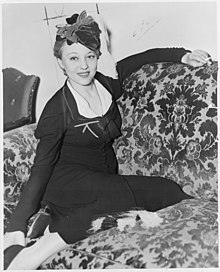Mother and I went downtown today. I got me some white shoe polish and cleaner and Mother bought some ink.
The daily diary entries from Ruth Catherine McKenzie McCoy. Her daughter, author Fran Baker, has included photos, historic notes and "old-time" recipes following the entries. Readers are welcome to comment.
Sunday, July 31, 2011
Saturday, July 30, 2011
Sunday, July 30, 1933
Pauline and Nadine and I went up to the church on 27th and Prospect. I read my magazine today.
 |
| Jean Harlow (March 3, 1911 – June 7, 1937) July 30, 1933 supplement from The Philadelphia Record Jean Harlow was born Harlean Carpenter in Kansas City, Missouri, on March 3, 1911. The daughter of a successful dentist, she had a comfortable upbringing. But teenage rebellion got the better of her and when she was 16 when she ran away from home and eloped with a young Kansas businessman by the name of Charles McGrew. The couple relocated to Los Angeles, where Jean's natural beauty and ease in front of the camera led to some work as an extra in movies. Jean soon caught the acting bug and over the next couple of years she was able to make a living on bit parts. However her marriage to McGrew was a disaster and they divorced after 2 years. Jean then threw all her energies into pursuing an acting career. In 1930 she landed a dream role in a big budget movie called "Hell's Angels". The movie was a hit, and Jean became MGM's newest starlet - complete with her own $60,000 contract. With her sassy attitude and voluptuous figure she became the ultimate object of desire for red blooded males across the globe. In 1931 MGM paired Jean with Clark Gable. The duo were terrific together, creating an unforgettable onscreen chemistry, and they wound up doing a total of six films together. Tragedy struck Harlow twice while paired with Gable. During the filming of their second movie, "Red Dust," Jean received the news that her second husband of only a few weeks, Paul Bern, had apparently committed suicide. Then during the filming of their sixth movie, "Saratoga," Jean was hospitalized and diagnosed with uremic poisoning. Ten days later a shocked world heard the news that she was dead. |
Labels:
"Hell's Angels",
"Red Dust",
"Saratoga",
1933,
Clark Gable,
Fran Baker,
Jean Harlow,
July 30,
Kansas City,
Kindle ebooks,
Miss Francie's Folly,
novels,
Pursuing Miss Pippa,
The Talk of the Town
Friday, July 29, 2011
Saturday, July 29, 1933
Aunt Kate and Uncle Laten and Helen were by again today. Helen and I went down and got us eacher magazine.
| Cover art copyright (c) Russell Sambrook Sambrook's career was eclipsed by other Saturday Evening Post regulars like E. M. Jackson, Douglass Crockwell, Ellen Pyle, Andrew Loomis, and, of course, Norman Rockwell. But from the 'twenties through the 'fifties, Sambrook's workmanship was called upon for the cover of the Post, The People's Home Journal, The American Boy, and others. |
Thursday, July 28, 2011
Friday, July 28, 1933
Jennie and Bobby Mallin left this morning for San Francisco. He's going to work on that new bridge. Cal, Helen and Kate and Laten were by this afternoon.
Wednesday, July 27, 2011
Thursday, July 27, 1933
I went out and played with the kids around here this morning. I read my magazine, then I let Pauline read it. Went to the ballgame.
Until 1933 every Coke served at a soda fountain was
mixed by hand. The Coke syrup was put in a glass, the
carbonated water added, and they were stirred together
with a spoon.
When Coca-Cola debuted the first automatic fountain
dispenser (pictured below) at the Century of Progress
Exhibition in Chicago, people were amazed to see an
already-mixed Coke served by just pulling a handle.
Until 1933 every Coke served at a soda fountain was
mixed by hand. The Coke syrup was put in a glass, the
carbonated water added, and they were stirred together
with a spoon.
When Coca-Cola debuted the first automatic fountain
dispenser (pictured below) at the Century of Progress
Exhibition in Chicago, people were amazed to see an
already-mixed Coke served by just pulling a handle.
 |
| 1933 Coke Dispenser |
Labels:
1933,
1933 Coke Dispenser,
1933 diary,
Coca-Cola,
Fran Baker,
July 27,
Kansas City,
Kindle ebooks,
Miss Francie's Folly,
novels,
Pursuing Miss Pippa,
Romeo Romeo,
The Talk of the Town
Tuesday, July 26, 2011
Wednesday, July 26, 1933
Pauline and Gweyn and Baby Doll were over. Mother is up today. Today was girl's day at the swimming pool but I didn't get to go.
 |
| George "Machine Gun" Kelly being led from the Shelby County, TN, jail for his trip to Oklahoma City, where his and Kathryn's trial was held Continued from July 25 ... In October 1933, George and Katherine Kelly were convicted and sentenced to life imprisonment. Their accomplices were tried separately but received the same sentence. The trials were held at the Post Office, Courthouse and Federal Office Building in Oklahoma City. Eventually all chages against Kathryn Kelly were dropped, and she was released in released from prison in 1958. The kidnapping of Urschel and the two trials that resulted were historic in several ways: 1) they were the first, last, and only federal criminal trials in the United States in which moving cameras were allowed to film; 2) the first kidnapping trials after the passage of the so-called Lindbergh Law, which made kidnapping a federal crime; 3) the first major case solved by J. Edgar Hoover's evolving and powerful FBI. For that, and for bragging he was going to break out of Leavenworth and get Kathryn out in time for them to spend Christmas together, Kelly got sent to Alcatraz; 4) the first crime in which defendants were transported by airplane. At the time, it was the largest ransom ever paid in the United States. George "Machine Gun" Kelly was eventually transported back to Leavenworth, where he died of heart trouble. After she was released from prison, Kathryn returned to Oklahoma and worked as a bookkeeper until her death. The End (of this crime story, anyway) |
Monday, July 25, 2011
Tuesday, July 25, 1933
Aunt Kate, Uncle Laten and Helen were by this morning. I got me a book to read and an ice cream cone today. I cooked the dinner and supper.
Sunday, July 24, 2011
Monday, July 24, 1933
Mother got sick today like I am. She washed clothes this morning. I went out and played a little in the evening. Sure was hot.
 |
| Kathryn Thorne Kelly (Mrs. George "Machine Gun" Kelly) Born Cleo May Brooks, 18 March 1904 — Died 28 May 1985 Kidnapper and Gun Moll - gave her husband his first machine gun Considered by the U. S. Department of Justice as the "brains of the Urschel kidnapping" Continued from July 23, 1933 . . . Having been burned once already when an Indiana kidnapping she and George carried out resulted in no ransom being paid, Kathryn was determined that the kidnapping of Oklahoma oilman Charles F. Urschel would pay off big time. Urschel was held for nine days, during which time several letters were sent to his family and friends demanding $200,000 for his release. Following the instructions in the letters, $200,000 in used $20 notes of the Federal Reserve Bank, Tenth District, was obtained and the serial numbers recorded. They were placed in a new, light-colored leather Gladstone bag. At the same time, another identical bag was purchased and filled with old magazines, in case of a hijacking attempt. As a precaution, it was decided that two of Urschel's trusted friends would take the money to Kansas City, as instructed. By prearrangement, one man sat just inside the rear end of the observation car, while the other sat on the observation platform with the bag containing the magazines. Unbeknownst to them, Kathryn Kelly was also on that train. Once the ransom was paid, Urschel was returned to his family. He was exhausted and still in shock, but otherwise unharmed. That was when the FBI went to work . . . To be continued . . . |
Saturday, July 23, 2011
Sunday, July 23, 1933
I felt better today. Went to church. I got some oranges and lemons. Raiferts went over to Mart's yesterday, but Mr. Raifert was over today.
Friday, July 22, 2011
Saturday, July 22, 1933
I went swimming with Gweyn and Pauline. I got sick at my stomach and vomited three times. I think it's because I ate something.
Thursday, July 21, 2011
Friday, July 21, 1933
I went swimming today with Gweyn and Pauline in the afternoon. I got my Beginner's Button. Mother is sick. Uncle L(aten) is sick.
Wednesday, July 20, 2011
Thursday, July 20, 1933
I read some magazines and sewed on the machine. Daddy went over to Raiferts' to play pinochle. Mother was sick.
Tuesday, July 19, 2011
Wednesday, July 19, 1933
Pauline and I went swimming in the afternoon. In the evening we went down to the Water Carnival and went swimming again.
Labels:
1933,
1933 diary,
99 cent ebooks,
author,
Fran Baker,
July 19,
Kansas City,
Kindle ebooks,
Miss America 1933,
Miss Francie's Folly,
Pursuing Miss Pippa,
Romeo Romeo,
The Talk of the Town
Monday, July 18, 2011
Tuesday, July 18, 1933
I straightened up the house today. Pauline and I climbed trees. I gave her back her magazine. Went over to Gweyn's.
Labels:
"Peter Gunn",
1933,
1933 diary,
Alexis Smith,
Craig Stevens,
Fran Baker,
July 18,
Kansas City,
Kindle ebooks,
Miss Francie's Folly,
Pursuing Miss Pippa,
Romeo Romeo,
The Talk of the Town
Sunday, July 17, 2011
Monday, July 17, 1933
We washed today. Daddy got some tickets to the ballgame so we all went. Pauline went with us. They played under lights.
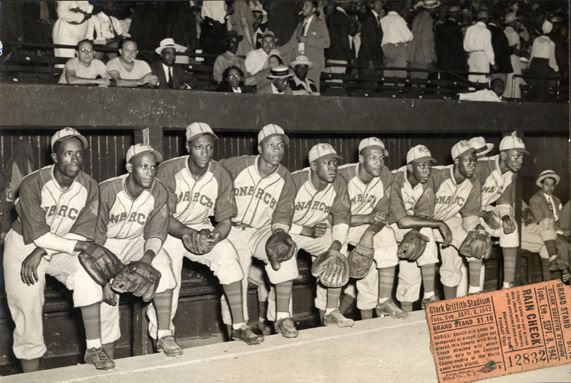 |
| Kansas City Monarchs - 1920-1965 Satchel Paige (far right) and Buck O'Neill (4th from right) Home Field: Blues Stadium, 22nd and Brooklyn, Kansas City, Missouri The Kansas City Monarchs were the longest-running franchise in the history of baseballs' Negro Leagues. Operating in Kansas City, Missouri, and owned by J. L. Wilkinson, they were charter members of the Negro National League. Wilkinson was the first Caucasian owner at the time of the establishment of the team. In 1930, the Monarchs became the first professional baseball team to use a portable lighting system which was transported from game to game in trucks to play games at night, five years before any major league team did. The Monarchs won ten league championships before integration, and triumphed in the first Negro League World Series in 1924. Following the death of the original league, the Monarchs spent several years as an independent team, mostly barnstorming through the AmericanMidwest, West, and western Canada. They became charter members of the Negro American League in 1937, winning the first league title. Even after the team was sold and moved to Michigan, they retained the name Kansas City Monarchs. The Negro American League ceased operations in 1962 and the Monarchs finally disbanded in 1965. |
Saturday, July 16, 2011
Sunday, July 16, 1933
Went out to Winnwood Beach with Kate's. Went swimming. I found a "free milk" nickel. We won a box of candy.
 |
| Joan Crawford - July 16, 1933 Measuring 7-1/2" X 9-1/2", these dated black & white supplements were included in Sunday issues of various newspapers and became collector's items. The above photo came from the July 16, 1933 issue of The Philadelphia Record. |
Friday, July 15, 2011
Saturday, July 15, 1933
Pauline and her mother and Sugar and Johnnie and I went down to the Grove but they closed the pool. Pauline gave me a magazine to read.
Labels:
1933,
1933 diary,
author,
Fran Baker,
July 15,
Kindle ebooks,
Love Story Magazine,
Miss Francie's Folly,
Pursuing Miss Pippa,
Romeo Romeo,
Street and Smith,
The Talk of the Town
Thursday, July 14, 2011
Friday, July 14, 1933
I went down swimming with Pauline to the Grove. Helen came down there with her mother and my mother.
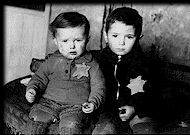 |
| Emanuel and Avram Rosenthal, killed at Majdanek July 14, 1933: The Nazi Party is declared the only legal party in Germany. The Nazis also pass a law stripping Jewish immigrants from Poland of their German citizenship. |
Wednesday, July 13, 2011
Thursday, July 13, 1933
I didn't do much today. Pauline and Edda Mae were over. It sure was awfully hot.
 |
| July 13, 1933 was a truly historic day in the life of the resort town of Shediac, New Brunswick, Canada. This was the day that Italian General Italo Balbo, Minister of Aviation in Benito Mussolini’s cabinet, and his armada of twenty four Savoia Manchetti S-55 flying boats alighted on Shediac Bay. They were on their way to the Chicago Century of Progress Exhibition. This was the first massed flight of aircraft ever to cross the Atlantic. |
Tuesday, July 12, 2011
Wednesday, July 12, 1933
Went over to the hospital today. Aunt Katie and them were here. Went swimming in afternoon. Evening, too.
 |
| "Boots" of "Boots and Her Buddies" comic strip fame Ogden Standard Examiner (Ogden, Utah) July 11, 1933 Here she is, youngsters! “Boots,” the famous star of the comic strip, “Boots and Her Buddies,” with two of the garments from her new summer outfit. The outfit will include 12 garments in all. The water’s fine today, so her new bathing suits especially appeal to her. And now you can have the fun of trying them on “Boots” trim little figure. Just cut them out and color them. Tomorrow (July 12) there will be two dresses for “Boots.” (See below) 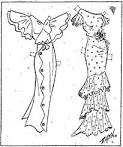 |
Labels:
"Boots and Her Buddies",
1933,
1933 diary,
author,
Fran Baker,
July 12,
Kansas City,
Kindle ebooks,
Miss Francie's Folly,
Pursuing Miss Pippa,
Romeo Romeo,
The Talk of the Town
Monday, July 11, 2011
Tuesday, July 11, 1933
Mr. Raifert is in General Hospital. Helen and Aunt Katie and Uncle Laten are coming over tomorrow to take us. Going to go swimming.
Sunday, July 10, 2011
Monday, July 10, 1933
Daddy gave me a quarter to put in my bell bank for my school books. I went swimming. Called Kate.
Labels:
"The Butcher Boy",
1933,
1933 diary,
99 cent ebooks,
Buster Keaton,
Fran Baker,
Harry Houdini,
July 10,
Kansas City,
Kindle ebooks,
Miss Francie's Folly,
Pursuing Miss Pippa,
Romeo Romeo
Saturday, July 9, 2011
Sunday, July 9, 1933
Today sure was hot. I went out and played with Betty a little while. Pauline and Sugar and I bought some candy.
*Note: The Great Depression ushered in a golden age of candy bars. Back then, they were referred to as "nickel bars" and marketed as a cheap source of quick calories.
*Note: The Great Depression ushered in a golden age of candy bars. Back then, they were referred to as "nickel bars" and marketed as a cheap source of quick calories.
 |
| Consisting of a lump of cherry foundant covered by a chocolate-and-peanut hash the Twin Bing has been manufactured by the Palmer Candy for five generations. |
![[CHOCSIDE7]](http://si.wsj.net/public/resources/images/PT-AN709_CHOCSI_D_20100129213000.jpg) |
| Abba-Zaba are taffy candy bars with peanut butter centers have been around since 1922. Originally manufactured by Colby & McDermott, today they're made by Annabelle Candy Company. |
Labels:
1933,
1933 diary,
99 cent ebooks,
Abba-Zaba,
Fran Baker,
July 9,
Kansas City,
Kindle ebooks,
Miss Francie's Folly,
Pursuing Miss Pippa,
Romeo Romeo,
The Talk of the Town,
Twin Bing
Friday, July 8, 2011
Saturday, July 8, 1933
It rained for a while today. We all went swimming again (except Joyce). Daddy got a big roaster for dinner tomorrow.
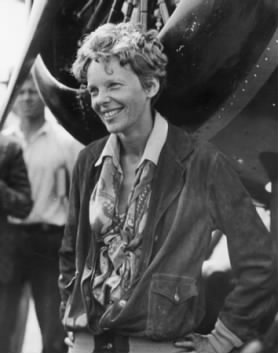 |
| Amelia Mary Earhart (July 24, 1897 – missing July 2, 1937) Born in Atchison, Kansas Following are just a few of her Aviation Achievements October 22, 1922 - Set women's altitude record of 14,000 feet June 17-18, 1928 - First woman to fly across the Atlantic; 20hrs 40min (Fokker F7, Friendship) Fall 1929 - Elected as an official for National Aeronautic Association and encouraged the Federation Aeronautique Internationale (FAI) to establish separate world altitude, speed and endurance records for women April 8, 1931 - Set women's autogiro record with 18,415 feet (in a Pitcairn autogiro) May 20-21, 1932 - First woman to fly solo across the Atlantic 14hrs 56min (It was also the 5th anniversary of Lindberg's Atlantic flight) August 24-25, 1932 - First woman to fly solo nonstop coast to coast Set women's nonstop transcontinental speed record, flying 2,447.8 miles in 19hrs 5min July 7-8, 1933 - Broke her previous transcontinental speed record by making the same flight in 17hrs 7min |
Thursday, July 7, 2011
Friday, July 7, 1933
Pauline and Gweyn and Joyce and Edda May and I all went swimming. We swung in the swing up there, too. Concert was there.
Labels:
"Hold Your Man",
1933,
1933 diary,
99 cent ebooks,
Anita Loos,
author,
Clark Gable,
Fran Baker,
Jean Harlow,
July 7,
Kansas City,
Kindle ebooks,
Miss Francie's Folly,
Pursuing Miss Pippa,
Romeo Romeo
Wednesday, July 6, 2011
Thursday, July 6, 1933
Aunt Katie and Helen were over this afternoon. Helen and I exchanged magazines. We got some ice cream cones.
Tuesday, July 5, 2011
Wednesday, July 5, 1933
I went swimming today with Mrs. Mitchell and Edda Mae. In the evening Gweyn and Pauline and I went swimming.
Labels:
1933,
1933 diary,
99 cent ebooks,
Billie Beck,
Cecil B. DeMille,
Fran Baker,
July 5,
Kansas City,
Kindle ebooks,
Miss Francie's Folly,
Pursuing Miss Pippa,
Romeo Romeo,
Sally Rand
Monday, July 4, 2011
Tuesday, July 4, 1933
Went to Swope Park today and ate our lunch. In the evening we came home and had some fireworks.
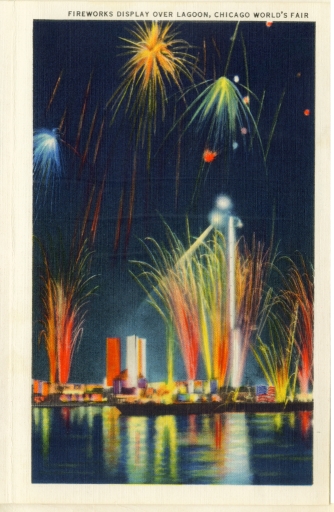 |
| July 4, 1933: Fireworks at the Chicago World Fair Happy 4th of July! |
Labels:
1933,
1933 diary,
99 cent ebooks,
author,
Chicago World Fair,
Depression-era diary,
Fran Baker,
July 4,
Kansas City,
Kindle ebooks,
Miss Francie's Folly,
Pursuing Miss Pippa,
Romeo Romeo
Sunday, July 3, 2011
Monday, July 3, 1933
I went swimming twice, with Pauline first and this evening with Gweyn and Pauline.
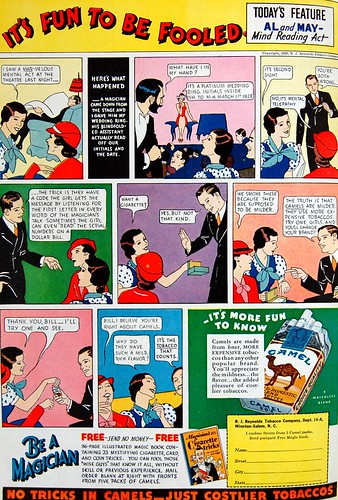 1933 Camel Cigarettes "Mind Reading" Magic Trick "It's Fun to be Fooled, It's More Fun to Know" Camel Cigarette Advertising Magic tricks cartoon |
Saturday, July 2, 2011
Sunday, July 2, 1933
As it was so hot today, Mother and I didn't go to church. I cut my foot again in the grass.
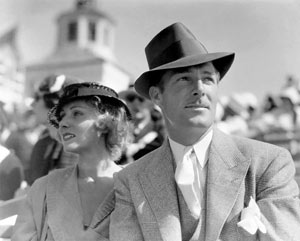 |
| July 2, 1933: Randolph Scott and Vivian Gaye Los Angeles National Air Races Randolph Scott (January 23, 1898 – March 2, 1987) was an American film actor whose career spanned from 1928 to 1962. He appeared in a variety of genres in over 100 movies, but his most enduring image in 60 of those movies is that of a tall-in-the-saddle Western hero. With all those Westerns under his belt, Scott was inducted into the Western Performers Hall of Fame at the National Cowboy and Western Heritage Museum in Oklahoma City, Oklahoma, in 1975. He also received an In Memoriam Golden Boot Award for his work in Westerns. Randolph Scott has a star on the Hollywood Walk of Fame at 6243 Hollywood Blvd. |
Friday, July 1, 2011
Saturday, July 1, 1933
It sure was hot today. The Grove swimming pool opened up today so Pauline and I went swimming.
| The Grove Swimming Pool, Kansas City, Missouri Courtesy Missouri Valley Special Collections - KCMO Public Library View of the pool at the Grove in Kansas City, Missouri. A lone swimmer is visible with more people standing along the balcony looking down at the pool. Believe it or not, this photo was taken on July 5, 1915! |
Subscribe to:
Posts (Atom)




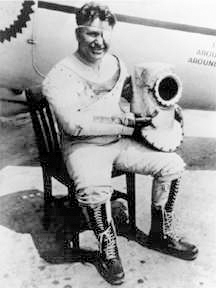


gCGk~%24(KGrHqN,!g8Ew5MTBqhNBMd9e2FtN!~~_3.JPG)





